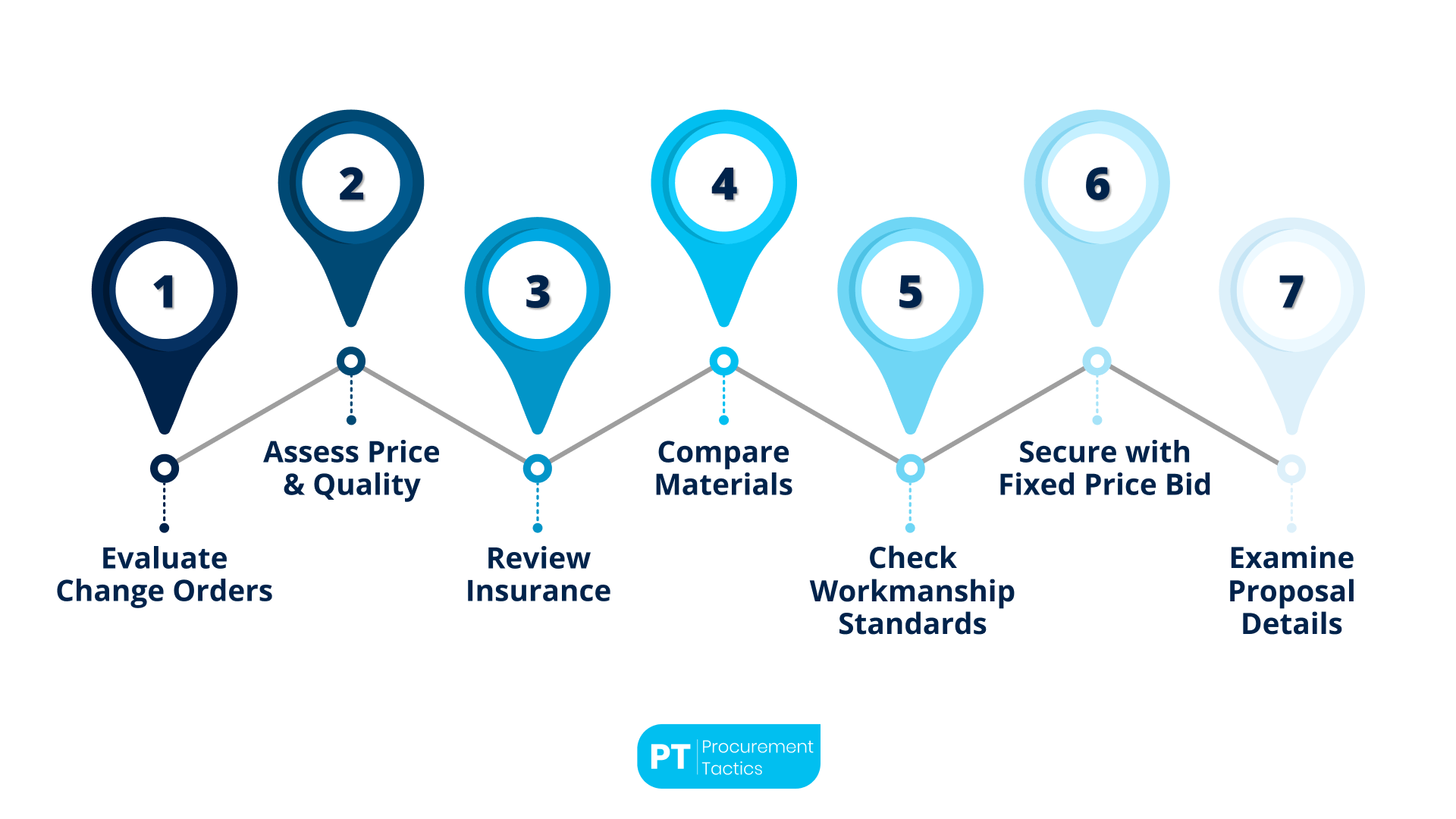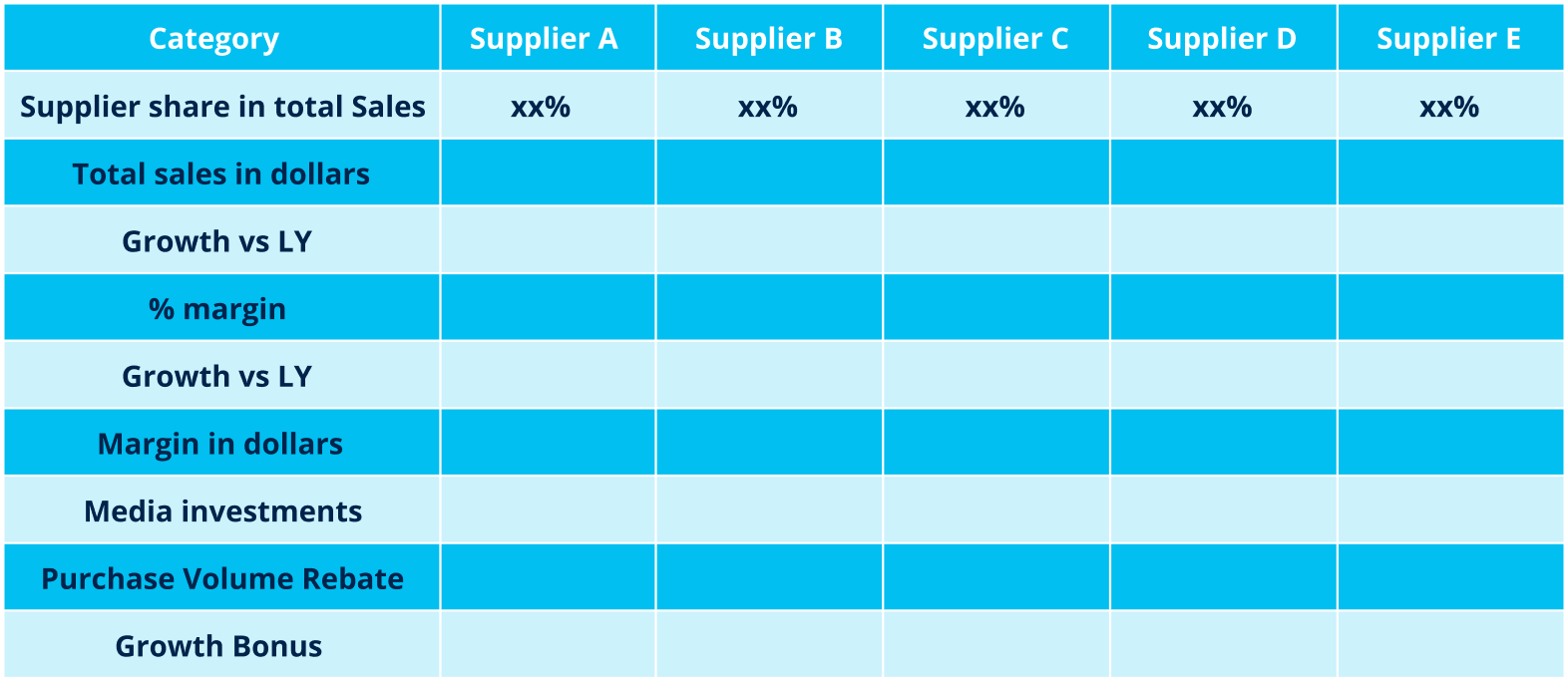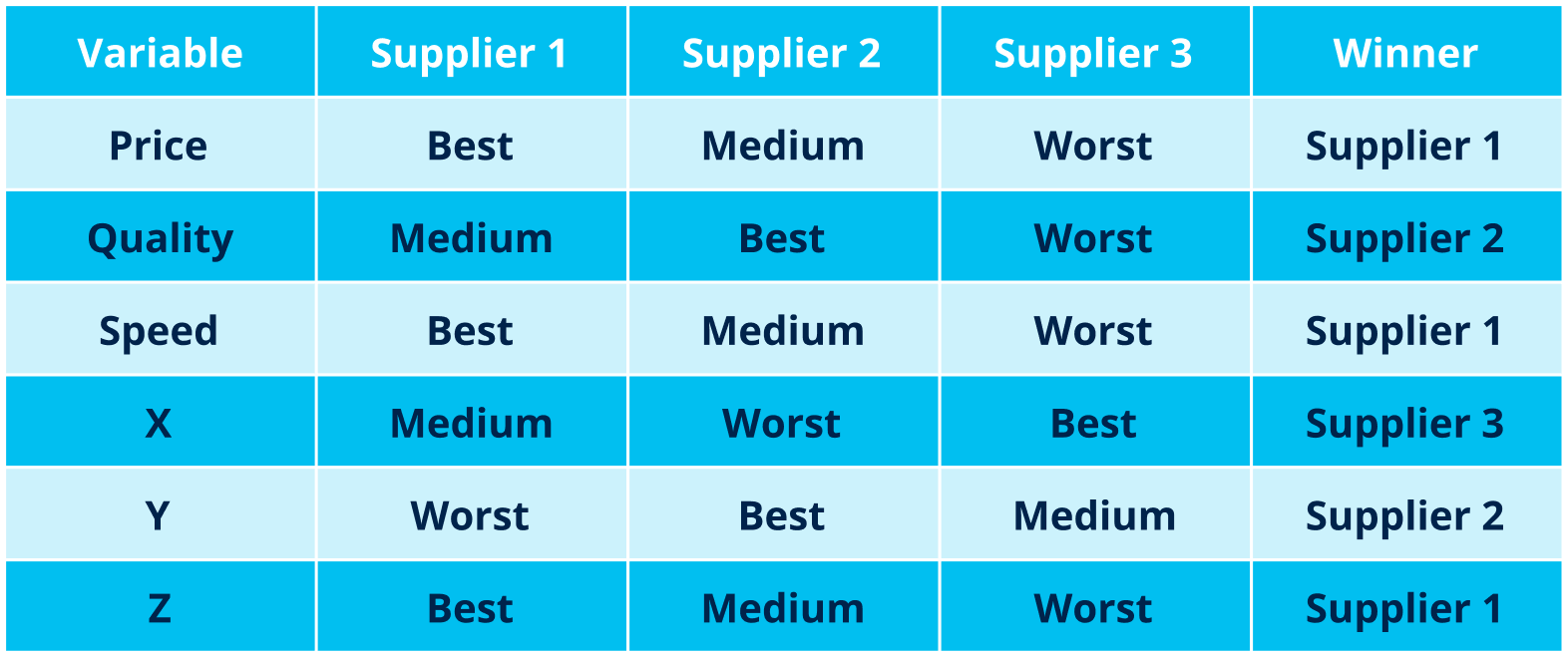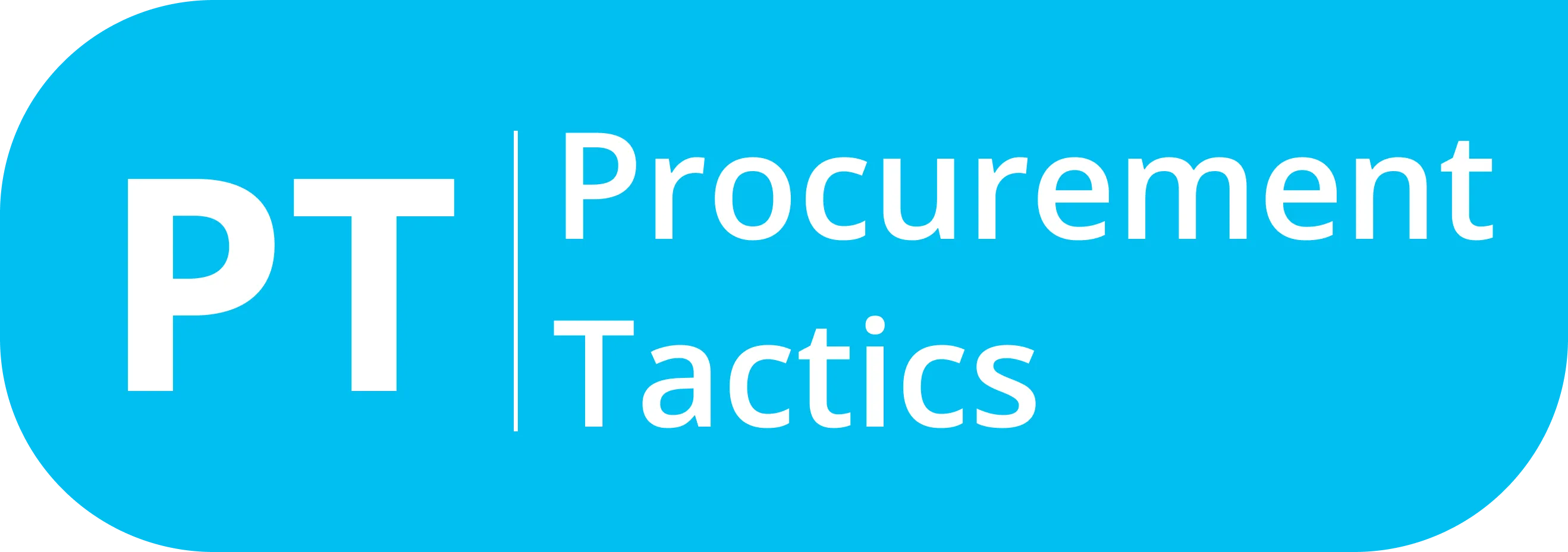Written by Marijn Overvest | Reviewed by Sjoerd Goedhart | Fact Checked by Ruud Emonds | Our editorial policy
Compare Proposal — 7 Steps To Close The Perfect Deal

As taught in the Negotiation Course for Procurement Professionals / ★★★★★ 4.9 rating
How to Compare Proposals?
- Compare proposals involves evaluating and contrasting different offers to identify the one that best aligns with the company’s needs and criteria.
- BATNA should not be in the frontline of negotiation, it should be only a backup plan.
- Having a BATNA ensures that you have all the information you need when comparing one proposal to another.
How to Compare Proposals
Welcome to a world of strategic decision-making, where every proposal presents an opportunity to elevate your business. It’s time for us to start learning how to compare proposals like a pro.
The template created by Procurement Tactics, as shown above, will help you with this, but we will now teach you which variables you can use to compare proposals from suppliers.

1. Compare Change Order Policies
There will be times when materials do not arrive on time or on schedule. During a worst-case scenario, the supplies needed may not come at all. Do check with each supplier to see how they’re going to handle change order policies. Make sure that the suppliers follow a strict process because otherwise, you are going to have to look for a more reliable supplier.
The same also holds for certain emergencies where you need to change the order itself. Say you need to change the order from 200 cases of beer to 300 cases. Check each proposal to see how each supplier is going to handle this kind of problem.
2. Comparing Price and Quality
This is probably the most impactful option to check for each proposal. Most procurement managers want every proposal to have that “bang for their buck” theory. Of course, while it is the most favorable situation, the cheapest proposals may not also be the best.
A smart procurement manager will understand the logic behind cheaper sources of supply. It could be that one supplier is selling materials that are inferior in quality. Some are even looking to just get rid of their surplus of materials without any regard for their quality at all. You need to be careful about proposals like these.
Always remember that a smart balance between pricing and quality should be present when comparing proposals.
3. Comparing Insurance
Sometimes, a better proposal guarantees insurance for the materials being delivered. If you do spot a proposal that has this kind of feature, it is always recommended to learn more about it.
Because, of course, most insurance has a silver lining and a professional procurement manager should always have a look at the fine print before signing it
4. Comparing the Materials/Supply Listed
A smart procurement manager should always read each proposal from top to bottom. So always be on the lookout for errors, especially on the number of supplies and the pricing for each supply. This is important because you don’t want to be put in a bad spot for approving or choosing a proposal that has incorrect details.
5. Comparing Workmanship Standards
For proposals where suppliers need to perform services for you, always check the proposal for any workmanship standards stated there. For example, if a furniture company promised to deliver 20 chairs that are crafted to the finest level in its proposal, then the supplier better be sure to uphold its workmanship standard.
For proposals, however, that do not have any workmanship standards in place, it should be treated as a red flag. It either means the supplier doesn’t care about the level of standards regarding the work they produce, or they are just going to deliver at a sub-standard workmanship rate.
6. Protecting yourself with the Fixed Price bid
For each type of proposal, you should always protect yourself from any bid that may deliver a poor outcome. When checking proposals on materials and deliverables, there should be a fixed price bid, where the amount agreed by both parties is now fixed and explicitly stated in a contract or purchase order.
7. Comparing the Actual Proposal Itself
Finally, have a look at the entire proposal.
Is it written properly? Was it duly signed by the owner or the branch manager of the said supplier? Is each quote printed legibly?
Remember, as the procurement manager, it is your job to check and assess each proposal carefully. If one proposal is quite different from the other, then it’s your job to get out, do some research, and find out why their proposal is different.
You can also use this template to help you more with comparing proposals:

BATNA– Best Alternative to Negotiated Agreement
To learn how to compare suppliers, you need to come up with your BATNA first.
BATNA is the abbreviation for “Best Alternative To a Negotiated Agreement.” This is going to be your ace in the hole, just in case you need to compare RFQs from a lot of suppliers.
The main point of a BATNA is to have a backup plan just in case things don’t go your way while comparing proposals coming from multiple suppliers.
For example, if one supplier has the materials you need for your company but prices heavily for each piece of material, then your BATNA would be another supplier that charges less for the same material. Say you’re looking for Acer laptops but your current supplier is all out of Acer laptops, then your BATNA would be another supplier that provides Acer laptops as well.
In plain, simple terms, it’s your best alternative than having no alternative at all.
Is BATNA that Important for Comparing Proposals?
The answer is yes, it is that important. Because without a BATNA, you will be confused when comparing one proposal to the other. Your BATNA should give you all the important information that you need to consider when comparing each proposal.
The information given can be any of the following:
- Pricing per proposal
- Amount of supplies present
- Discounts that are given per proposal
- Goodies that the supplier can offer for you
- Any other information that is relevant to the supplier and proposal
You can also use your BATNA during any negotiations that may arise once you’re finished comparing proposals. Of course, that is another topic for another day.

Learn the Art of Comparing Proposals
As a professional procurement manager, the art of comparing proposals is invaluable.
This is why you need our Negotiation Course For Procurement Professionals. We will teach you every trick and tip to become a true legend in the art of comparing proposals.
Conclusion
Mastering the art of comparing proposals is an essential skill for any procurement manager or negotiator seeking the perfect deal.
While the process may initially seem time-consuming, the key lies in understanding your BATNA. Your BATNA serves as a strategic tool, providing a backup plan and crucial information for effective comparison.
The importance of considering variables such as change order policies, pricing, quality, insurance, listed materials, workmanship standards, and fixed price bids cannot be overstated.
By utilizing a comprehensive template, like the one provided by Procurement Tactics, you can navigate the intricacies of comparing proposals like a professional. As you delve into this process, remember that attention to detail is paramount, ensuring that each proposal is scrutinized thoroughly.
Ultimately, armed with a well-defined BATNA and a keen understanding of the variables, you can make informed decisions that lead to securing the optimal deal from your suppliers.
I have created a free-to-download editable deal comparison template. It consists of a PowerPoint file and an Excel file, which can help you effectively compare proposals and choose the best option for what you need. I’ve also created a video where I explained how to use this template.
Frequentlyasked questions
How to compare a proposal?
To compare proposals, one needs to check on price, quality, change order policies, insurance, and the supplies or materials listed. Have a look at each and compare to determine which proposal is better.
What is BATNA?
BATNA is the acronym for “best alternative to no alternative”. This means picking the better option than having none at all.
Can I use a template to compare proposals?
There are many templates to use for comparing proposals, but the best by far always has BATNA as a major criterion.
About the author
My name is Marijn Overvest, I’m the founder of Procurement Tactics. I have a deep passion for procurement, and I’ve upskilled over 200 procurement teams from all over the world. When I’m not working, I love running and cycling.







